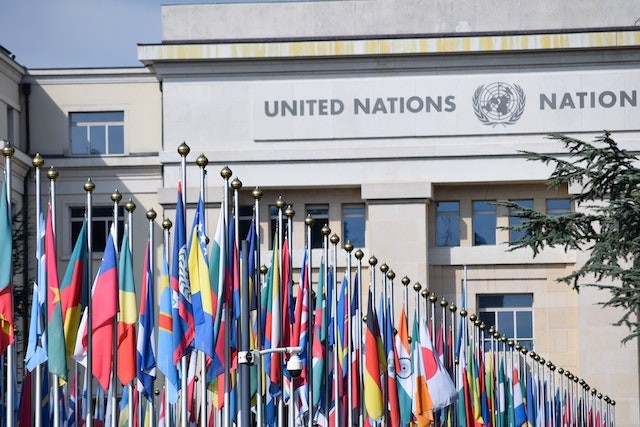
United Nations Statue: Why The Controversial Sculpture Was Compared To 'End Times Beast,' Removed Just Weeks After Unveiling?
A statue was displayed outside the United Nations in New York in November 2021. However, it was removed just weeks after the unveiling after the United Nations statue received an intense backlash from the netizens.
United Nations Statue
United Nations unveiled a new statue nearly two years ago. The sculpture features a fusion of a jaguar and an eagle. The organization described it as a "guardian for international peace and security."
The statue was placed on the Visitor's Plaza outside the UN headquarters. It was a donation from the government of Oaxaca, Mexico. Artists Jacobo and Maria Angeles were behind the artwork.
A guardian for international peace and security sits on the Visitor's Plaza outside #UN Headquarters. The guardian is a fusion of jaguar and eagle and donated by the Government of Oaxaca, Mexico @MexOnu. It is created by artists Jacobo and Maria Angeles.
— United Nations Photo (@UN_Photo) November 9, 2021
UN Photo/Manuel Elías pic.twitter.com/q8SSsQhz1L
According to the Mexico UN Mission, jaguars and eagles are strong animals representing the country's prehispanic and national history. However, the sculpture raised several eyebrows, with many expressing their disappointment and disgust for the design.
One user claimed it was the "perfect description of the beast" that Apostle John described in the Bible's book of Revelation and the prophet Daniel mentioned in the Old Testament. The user claimed it was prophesying about the end time. Another said it was a "demonic stuff." A different user stressed that the picture of a winged jaguar hardly represents peace and safety. He was wondering what the creator was thinking when they designed it.
Marcos Pereira also reacted after seeing the sculpture online, noting that he had to explain to his mom that the statue wasn't the beast from the apocalypse. Meanwhile, Robert Bernstein pointed out that most reactions only showed their ignorance of other cultures. He insisted that the United States has the right to practice or not practice religion, and many do not accept Christianity and find it offensive when forced to accept it as the "national religion."
The sculpture is an alebrije, portraying a mythological spirit guide prevalent in Oaxacan folk art. Alejibre is the name given to the contentious sculpture's fantasy fusion of traits from both the jaguar and the eagle. Alejibres typically have a variety of characteristics, including horns, antlers, wings, fins, and vivid color markings.
The guardian is a fusion of jaguar and eagle, considering that are strong animals that are very representitive in our prehispanic and national history.#MexicoUNSC #MásOaxacaEnElMundo
🇲🇽🇺🇳 pic.twitter.com/rPoWyJxHZx— Misión de México ONU (@MexOnu) November 5, 2021
ALSO READ: UN Statue of Peace: What Else Do You Need To Know About the 33-Foot Pedestal?
United Nations Statue Removed
The controversial UN statue was taken down just weeks after it was unveiled. However, the removal may have nothing to do with the backlash. According to Stéphane Dujarric, spokesperson for the Secretary-General, they didn't intend to keep the sculpture for long, and its removal was planned.
She added that the United Nations statue was a "temporary exhibit," organized by the Permanent Mission of Mexico to the United Nations. They scheduled it for removal on Dec. 20, just over a month after it was displayed outside the UN headquarters in New York City.
Before the display of the Guardian for International Peace and Security at the United Nations, the statue was on display along with an 11-foot dragon sculpture at the Rockefeller Center from Oct. 22 to Nov. 2 as part of the Día de los Muertos, or Day of the Dead celebrations.
RELATED ARTICLE: 1,600-year-old Roman Dodecahedron Unearthed in Belgium: What Were Those Ancient Objects Used For?
Check out more news and information on Design in Science Times.




![Earth's Quasi-Moon Kamo‘oalewa Could Originate From Lunar Surface Not Asteroid Belt [Study]](https://1721181113.rsc.cdn77.org/data/thumbs/full/53275/89/56/50/40/earths-quasi-moon-kamo-oalewa-could-originate-from-lunar-surface-not-asteroid-belt-study.png)









